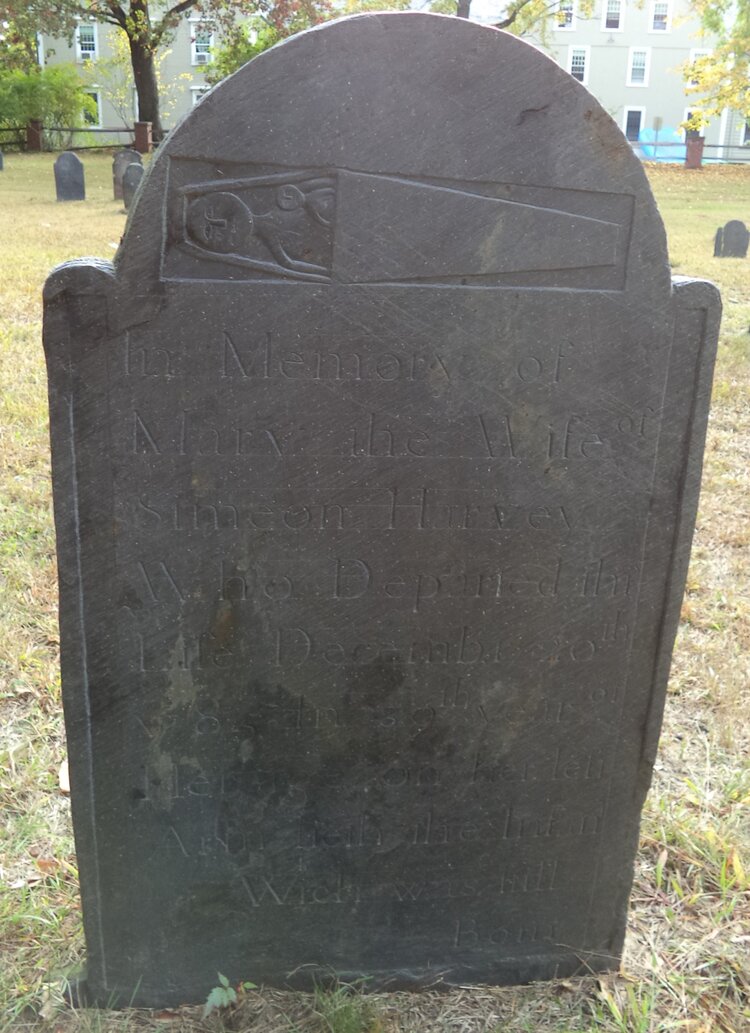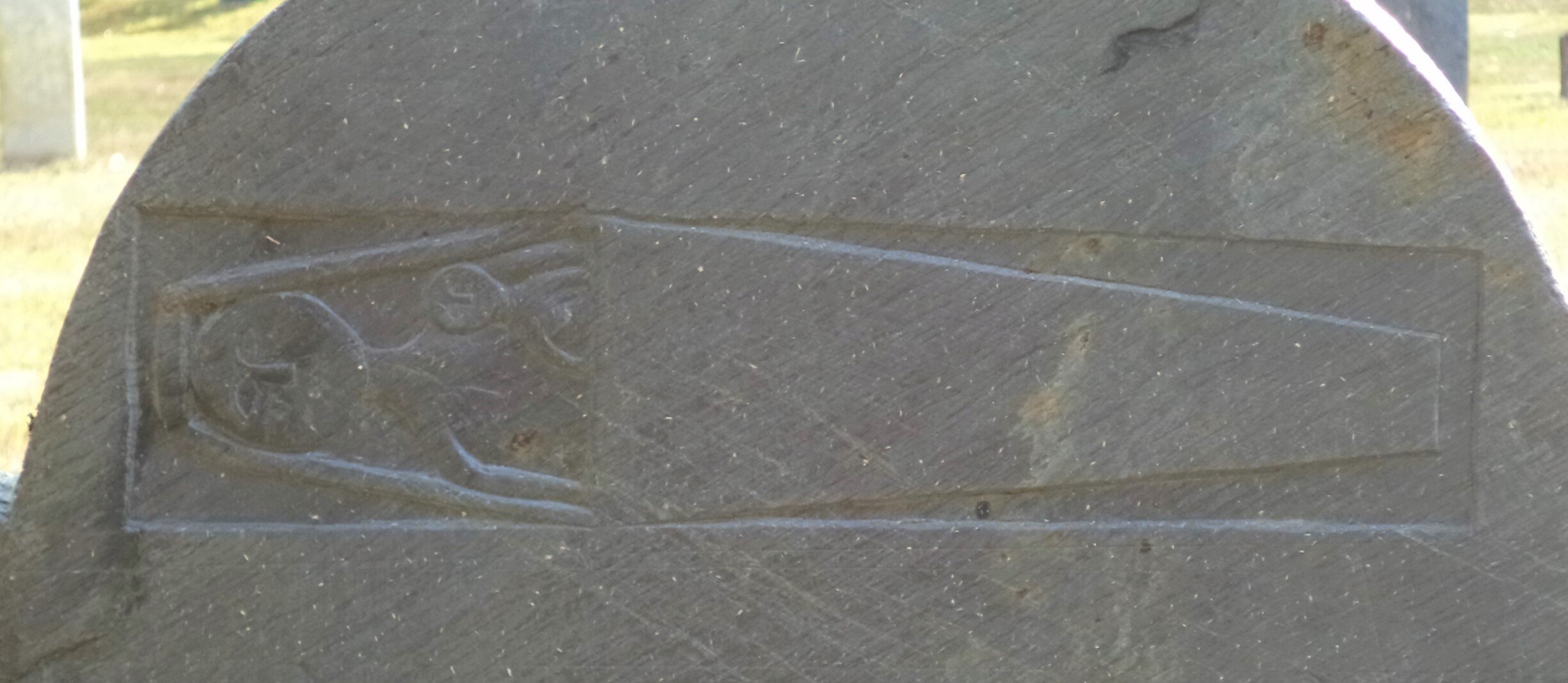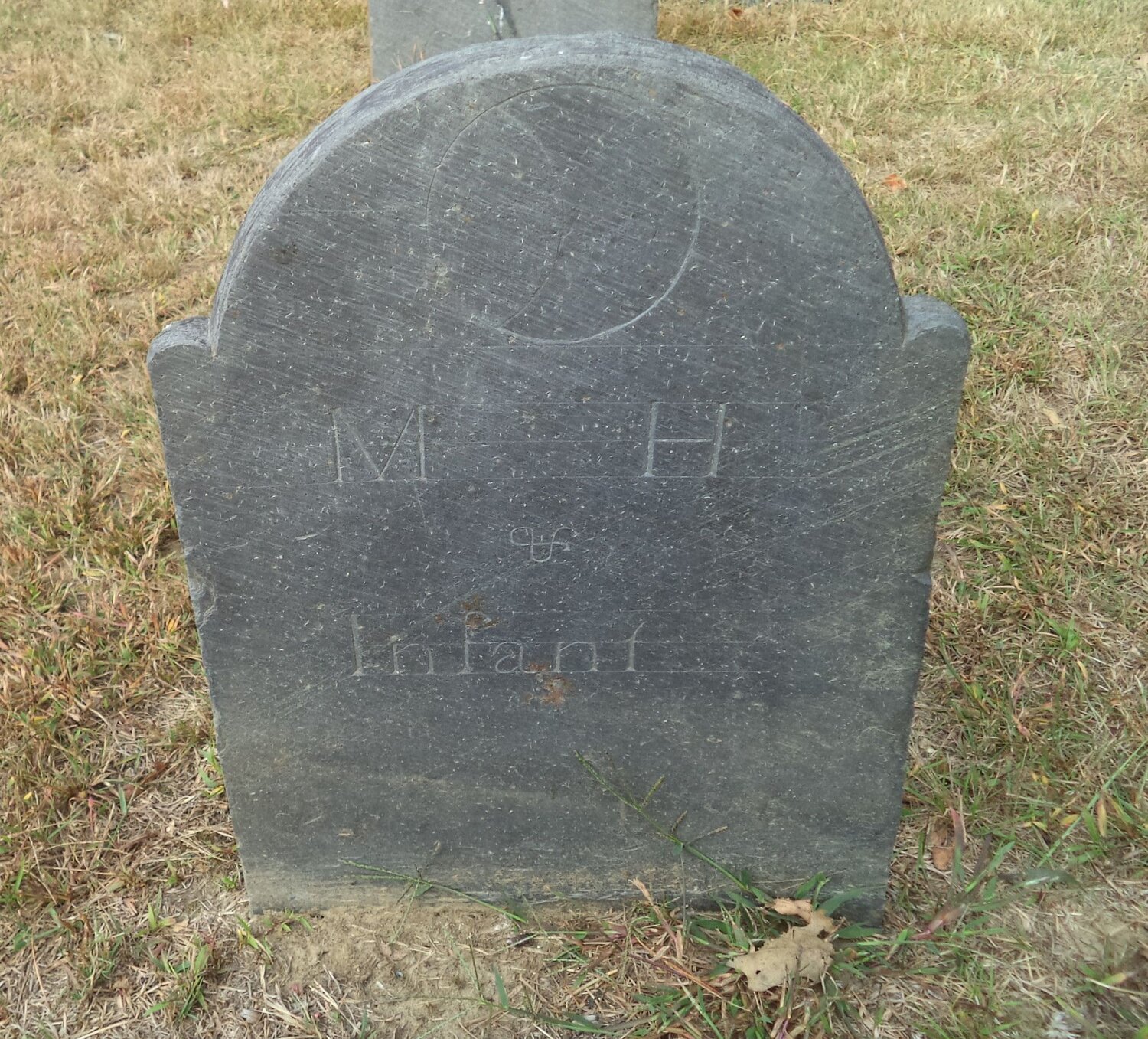Mary Arms was born in Deerfield on March 26, 1747, to her parents, Daniel and Mary Arms. She was their first child to live longer than 10 days. Following her birth, she was joined by four other siblings, three sisters and one brother. The family lived together on the south end of the Street, on the “Arms Corner.” Her childhood was likely typical of other young girls in the 18th century. She helped her parents around the house, learning the domestic arts from her mother as she grew. Being the oldest child, she probably helped in caring for her younger siblings.
Mary’s life would change forever when a young man named Simeon Harvey moved to town. Simeon was only eighteen, but still a newly discharged veteran of the French and Indian War, who came to Deerfield to apprentice as a blacksmith under Jonathan Arms. Jonathan was a cousin to Mary’s father. Mary at this time was fourteen years old. As Simeon became part of the extended Arms family through his apprenticeship, he and Mary no doubt became acquainted. When a romance developed between them is not clear, but seven years later, in January of 1768 they married. By this time Mary was twenty, almost twenty-one years old, and Simeon had likely just completed his apprenticeship.
The newly married couple set up house on the Street, halfway between Jonathan Arms’ house and Daniel Arms’ house. (Today the location is the corner of Wells Street and Old Main Street).
Simeon got to work as a blacksmith and Mary began keeping house. Soon Mary was pregnant with her first child, Emilia, born in March of 1769. Mary continued this pattern, giving birth roughly every two years for the next 16 years. There were at least 10 children documented as coming from this fruitful union of Harveys.
Mary’s story turned tragic with her last pregnancy. In December of 1785, at age thirty-eight, Mary died in childbirth, giving birth to a stillborn child. This tragedy left nine children, aged 2-16 without a mother. Simeon now found himself in the position of having to care for and console his motherless children, provide for his family, and mourn the loss of his wife.
Simeon arranged for Mary and her stillborn child to be buried together in the Albany Road Cemetery. He had Solomon Ashley, a local gravestone carver and neighbor, carve a stone for Mary and their child. Solomon created an image of a mother with a child cradled in her left arm, both in a coffin, on the top of the gravestone. The image speaks to the tragedy of life and dangers of childbirth. It also shows the world Simeon’s grief in losing both a wife and a child together.
Life without Mary must have been a struggle. Simeon’s youngest children needed supervision and were too young to be of much help around the house. Since no record has been found of Simeon remarrying, it is assumed he spent the rest of his life as a widower. Help with the children probably came from his in-laws, the Arms’, who lived nearby, and from his oldest children, Emilia and Mary, who were 16 and 15 at the time. When his oldest daughters began marrying in the early 1790s, he packed up his remaining family and moved back to Montague, where he was originally from. There he had his own family and support system to help him raise the younger children. Simeon would go on to move to Bennington, Vermont, with other members of his family, and died there in the early 1800s. Of his children, the five oldest girls all married and lived long lives, none dying in childbirth or at an early age. Simeon and Mary’s sons disappear from the records and not much is known about them after they left Deerfield.
Today Mary’s gravestone still stands in the cemetery, where it tells a sad story with a simple picture. The engraving ensures that Mary’s story and her legacy won’t be forgotten. And that is probably what Simeon and his children wanted for Mary.


